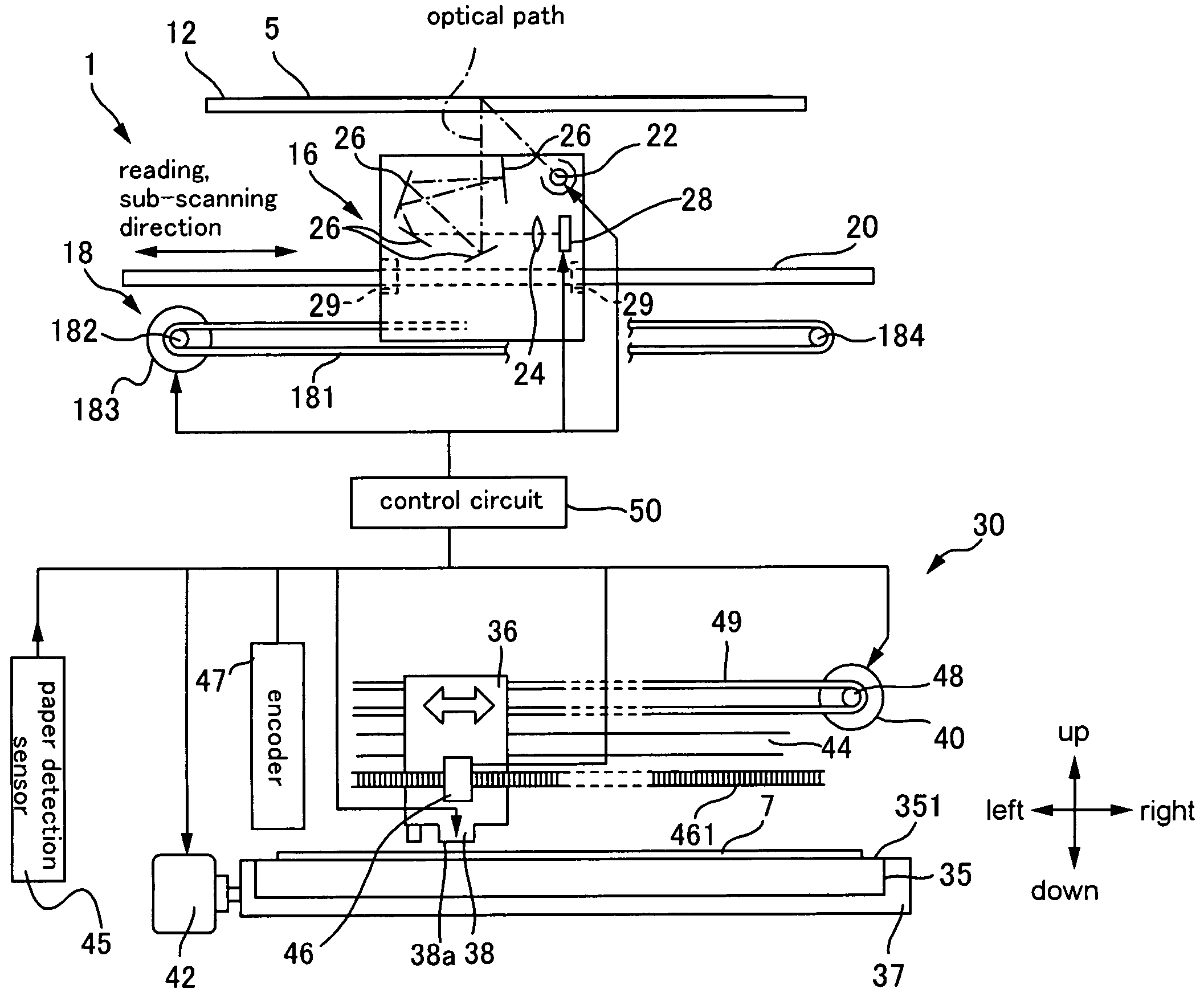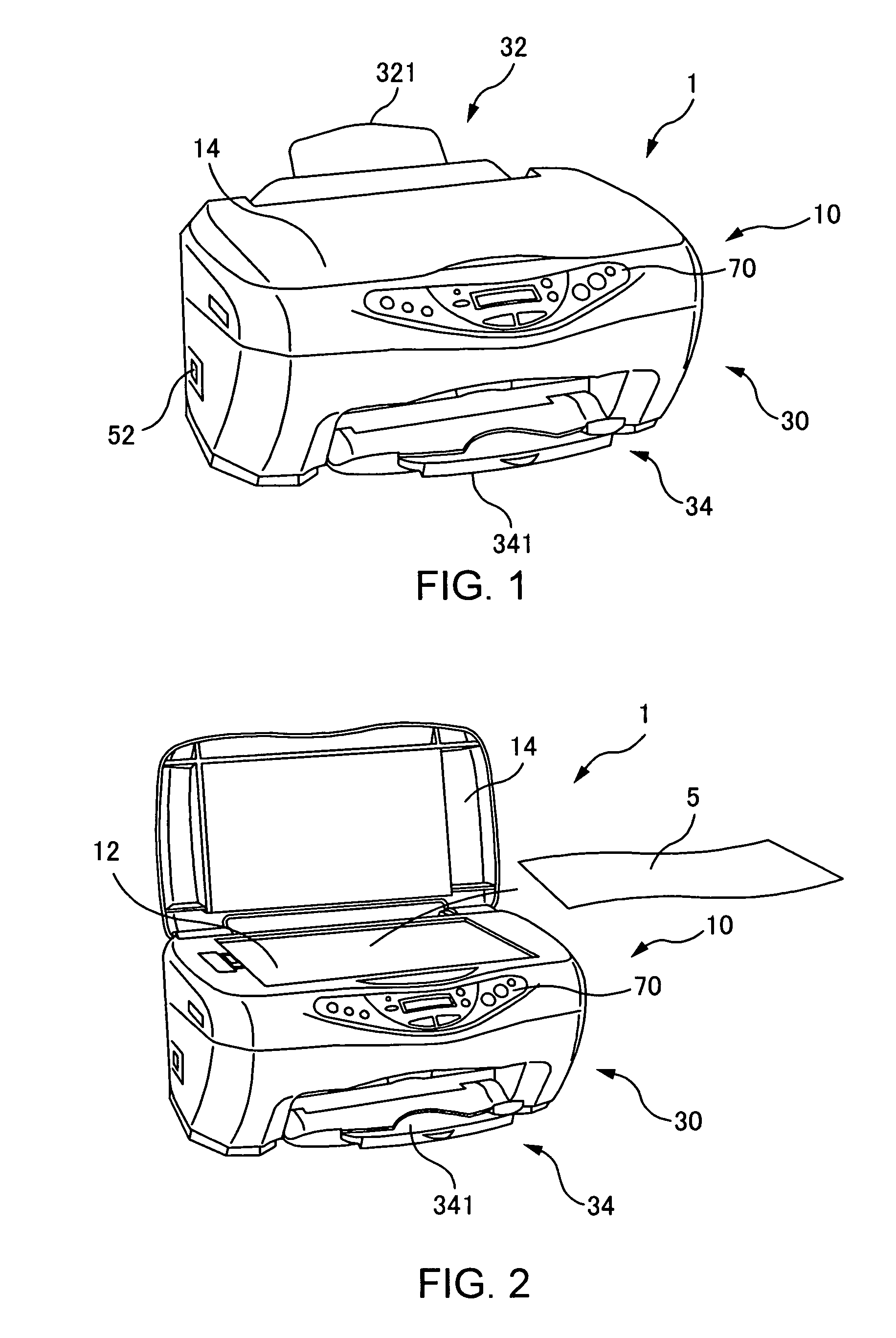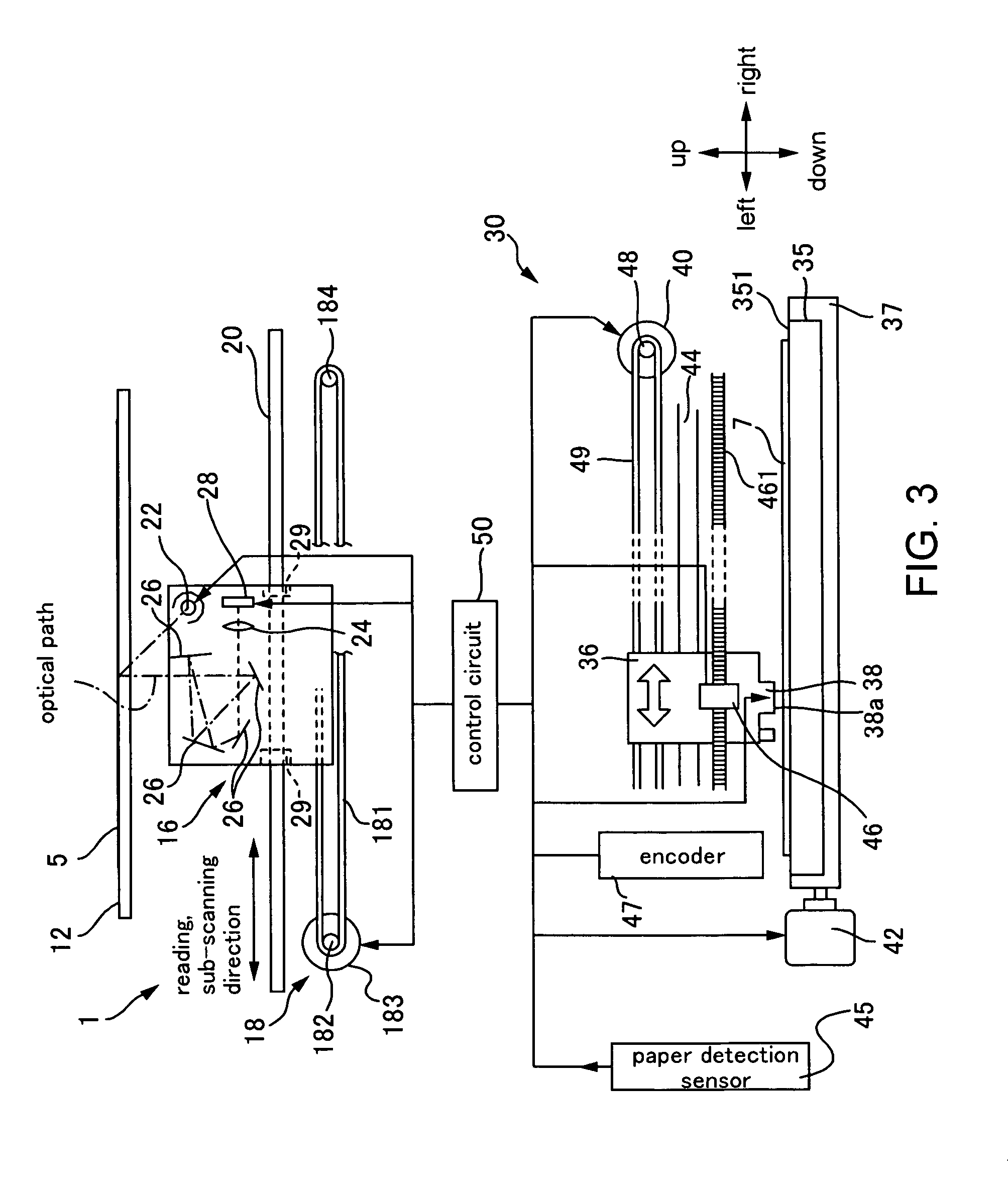Recording apparatus
a recording device and recording technology, applied in the field of recording devices, can solve the problems of reducing the control process speed of the recording device, affecting the output speed of the scanner-equipped printer, and affecting the quality of the recording, so as to reduce the occurrence of buffering, enhance throughput, and high-speed output
- Summary
- Abstract
- Description
- Claims
- Application Information
AI Technical Summary
Benefits of technology
Problems solved by technology
Method used
Image
Examples
first embodiment
of Repeat Printing
50 when Repeat Printing is Performed>
[0266]FIG. 23 is a block diagram showing an example of the control circuit 50 when repeat printing is performed. In FIG. 10 described above, two buffers —the image buffers 571, 572 (or the image buffers 694, 695)— were depicted for alternately performing writing and reading. In FIG. 23, however, in order to simplify the description, the two buffers for alternately performing writing and reading are not depicted.
[0267]Although the hardware configuration is the same as the control circuit 50 in FIG. 10 described above, the allocation of the memory area in the SDRAM 56, which is directly readable from the CPU 54, is different, for example. Further, in FIG. 10 described above, the CPU 54 accessed only the image buffers 694, 695. In FIG. 23, however, the CPU 54 also accesses the line buffer 691 and the interlace buffer 693. Further, the memory area allocation of the interlace buffer 693 is divided into two, and therefore, the buffer ...
second embodiment
in Repeat Printing
50 in the Second Embodiment>
[0298]FIG. 26 is a block diagram showing an example of a control circuit 50 of the second embodiment.
[0299]In the control circuit 50 of the SPC multifunction apparatus 1 of the second embodiment, the CPU 54 that manages the control over the entire SPC multifunction apparatus 1, a ROM 55 that stores a program for executing the control, the control ASIC 51 that manages the control over the scanner function, the printer function, and the local copier function, an SDRAM 56 in which data is directly readable and writable from the CPU 54, and the control panel section 70 serving as the input means are connected via the CPU bus 501. The scanner unit 10, the print head 38, the ASIC-SDRAM 69 in which data are directly readable and writable from the control ASIC 51, and so forth, are connected to the control ASIC 51.
[0300]The control ASIC 51 includes the scanner control unit 58, a re-sizing unit 59, the binarization processing unit 60, the interla...
PUM
 Login to View More
Login to View More Abstract
Description
Claims
Application Information
 Login to View More
Login to View More - R&D
- Intellectual Property
- Life Sciences
- Materials
- Tech Scout
- Unparalleled Data Quality
- Higher Quality Content
- 60% Fewer Hallucinations
Browse by: Latest US Patents, China's latest patents, Technical Efficacy Thesaurus, Application Domain, Technology Topic, Popular Technical Reports.
© 2025 PatSnap. All rights reserved.Legal|Privacy policy|Modern Slavery Act Transparency Statement|Sitemap|About US| Contact US: help@patsnap.com



